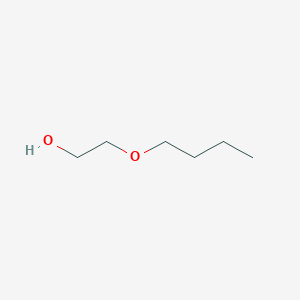-
Categories
-
Pharmaceutical Intermediates
-
Active Pharmaceutical Ingredients
-
Food Additives
- Industrial Coatings
- Agrochemicals
- Dyes and Pigments
- Surfactant
- Flavors and Fragrances
- Chemical Reagents
- Catalyst and Auxiliary
- Natural Products
- Inorganic Chemistry
-
Organic Chemistry
-
Biochemical Engineering
- Analytical Chemistry
- Cosmetic Ingredient
-
Pharmaceutical Intermediates
Promotion
ECHEMI Mall
Wholesale
Weekly Price
Exhibition
News
-
Trade Service
[ Focus on Chemical Machinery and Equipment Network ] With the development of modern analysis and detection technology, scientists can interpret a lot of information that cannot be observed with the naked eye from the artworks that have been passed down to this day.
This information has played an important role in the research, restoration, and authenticity of artworks.
Chemical machinery and equipment network hotspots pay attention to chemical machinery and equipmentThis information has played an important role in the research, restoration, and authenticity of artworks.
For example, the use of solid-phase microextraction-gas chromatography-mass spectrometry (SPME-GC-MS) technology to analyze volatile organic compounds (VOC) can study the degradation process and speed of plastics and other polymer materials, so as to better Provide a basis for preserving these artworks.
Pyrolysis gas chromatography-mass spectrometry (PY-GC/MS) can quickly analyze the composition of cultural relics and artwork materials, such as adhesives and pigments in murals, to help restorers restore the original appearance of cultural relics and artworks as much as possible.
Modern analytical detection technology can also identify counterfeit products by analyzing information such as the age of the sample, the material composition and source, and the manufacturing process.
Pyrolysis gas chromatography-mass spectrometry (PY-GC/MS) can quickly analyze the composition of cultural relics and artwork materials, such as adhesives and pigments in murals, to help restorers restore the original appearance of cultural relics and artworks as much as possible.
Modern analytical detection technology can also identify counterfeit products by analyzing information such as the age of the sample, the material composition and source, and the manufacturing process.
Generally, the analysis and testing of artworks focus on the composition of the material itself.
In a recent study, scientists started from the microbiological point of view and opened up a new direction for the research of artworks.
The research was published in "Frontiers in Microbiology".
In a recent study, scientists started from the microbiological point of view and opened up a new direction for the research of artworks.
The research was published in "Frontiers in Microbiology".
The research team from the Austrian University of Natural Resources and Life Sciences (BOKU) and the Biological Laboratory of the National Central Library of Rome, Italy used seven representative paintings of Leonardo as the research objects and found that there are more than expected diversity of bacteria on the paintings , Fungi and human DNA.
According to previous studies, fungi usually dominate the microbial community of paper products.
In these works of Da Vinci, the researchers found that bacteria from humans and insects account for a larger proportion of microorganisms, and there is a relatively high contamination of human DNA.
According to previous studies, fungi usually dominate the microbial community of paper products.
In these works of Da Vinci, the researchers found that bacteria from humans and insects account for a larger proportion of microorganisms, and there is a relatively high contamination of human DNA.
In this study, the main analytical technique used by the researchers was nanopore sequencing.
Gene sequencing technology has been developed for three generations since the last century, and nanopore sequencing technology is a representative of the three generations of sequencing technology that has emerged in recent years.
Compared with next-generation sequencing, nanopore sequencing technology realizes single-molecule sequencing, does not require signal amplification by PCR, and avoids base mismatches introduced during the PCR reaction; it has an ultra-long sequencing read length and an average sequencing read length It reaches 10~15kb, and the long read length is 40kb; through the recognition of the electrical signal, the methylation modification of the base can be directly judged.
In the fields of genome assembly, epigenetic markers, transcriptomics and metagenomics, nanopore sequencing technology has been used more and more widely.
It is precisely because of the development of sequencing technology that researchers have been able to detect sufficiently obvious data from these paintings that have been preserved for centuries.
Gene sequencing technology has been developed for three generations since the last century, and nanopore sequencing technology is a representative of the three generations of sequencing technology that has emerged in recent years.
Compared with next-generation sequencing, nanopore sequencing technology realizes single-molecule sequencing, does not require signal amplification by PCR, and avoids base mismatches introduced during the PCR reaction; it has an ultra-long sequencing read length and an average sequencing read length It reaches 10~15kb, and the long read length is 40kb; through the recognition of the electrical signal, the methylation modification of the base can be directly judged.
In the fields of genome assembly, epigenetic markers, transcriptomics and metagenomics, nanopore sequencing technology has been used more and more widely.
It is precisely because of the development of sequencing technology that researchers have been able to detect sufficiently obvious data from these paintings that have been preserved for centuries.
Researchers believe that most of the DNA detected may come from people who kept or processed the paintings after they were completed.
At present, the detected DNA has not been further analyzed, and the source cannot be determined for the time being.
At the same time, the preservation location of the paintings, insects and their feces, etc.
also left traces on these paintings that are indistinguishable by the naked eye, but after instrumental analysis they are very obvious.
By analyzing the living and dead microbial samples on the paintings, researchers can reinterpret the information left by people and the environment during the preservation of the paintings from another perspective, thereby providing more details for the study of paintings, and it can also be used as a counterfeit.
One of the basis.
At present, the detected DNA has not been further analyzed, and the source cannot be determined for the time being.
At the same time, the preservation location of the paintings, insects and their feces, etc.
also left traces on these paintings that are indistinguishable by the naked eye, but after instrumental analysis they are very obvious.
By analyzing the living and dead microbial samples on the paintings, researchers can reinterpret the information left by people and the environment during the preservation of the paintings from another perspective, thereby providing more details for the study of paintings, and it can also be used as a counterfeit.
One of the basis.
In addition, the researchers also detected microbes that can degrade paper on the paintings.
In the past, the preservation of cultural relics and artworks paid more attention to environmental factors such as temperature and humidity, as well as organisms such as insects and fungi.
The application of sequencing technology in the field of art research will also make the influence of microorganisms on the preservation of art more attention.
In the past, the preservation of cultural relics and artworks paid more attention to environmental factors such as temperature and humidity, as well as organisms such as insects and fungi.
The application of sequencing technology in the field of art research will also make the influence of microorganisms on the preservation of art more attention.
With the rapid development of the life science industry, sequencing technology has played an increasingly important role in the fields of molecular biology, medicine, and even archaeology and paleontology.
In the new research, sequencing technology has expanded new application areas.
With the further development of this application, sequencing technology may be able to bring us more hidden stories about artworks.
In the new research, sequencing technology has expanded new application areas.
With the further development of this application, sequencing technology may be able to bring us more hidden stories about artworks.
Original Title: Microbial Sequencing Reveals the Biological "Code" in Famous Paintings







